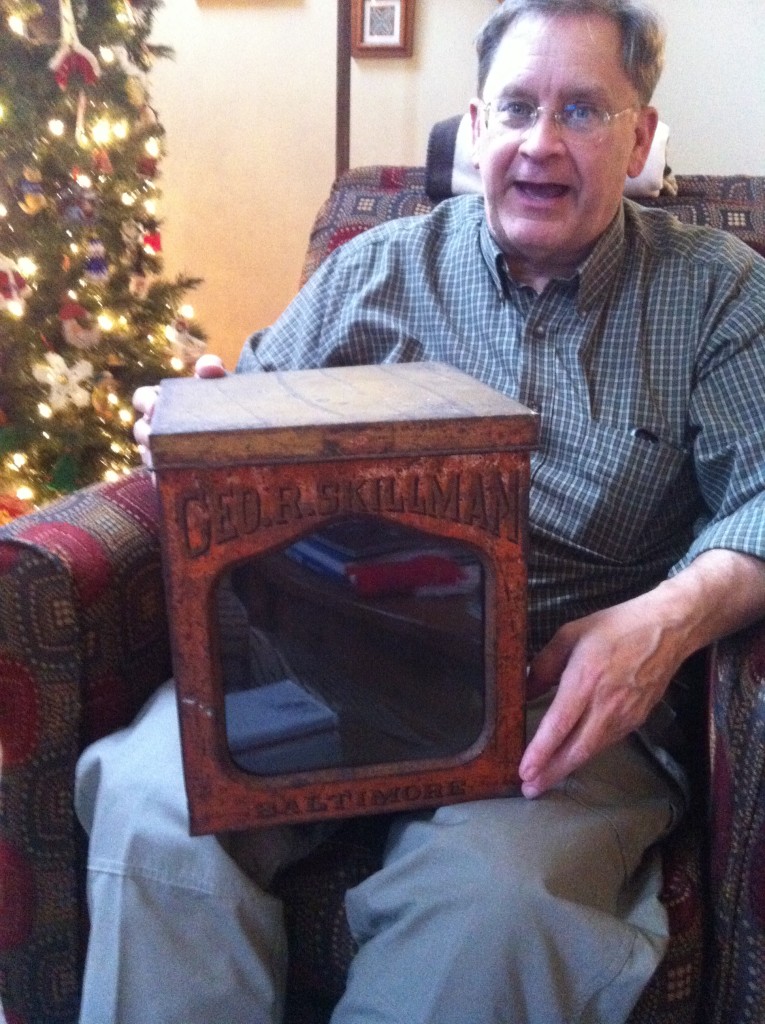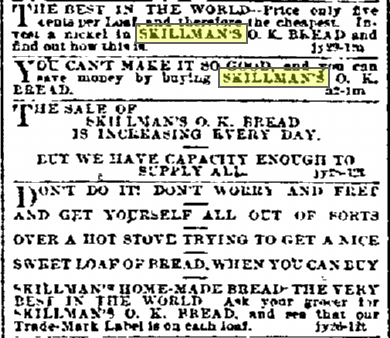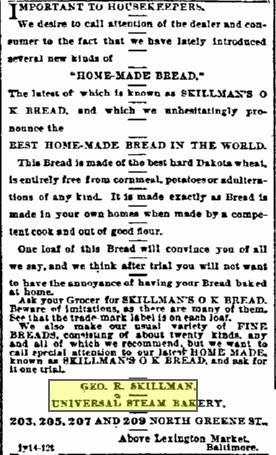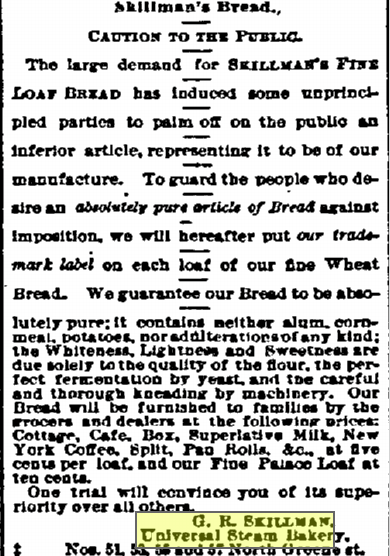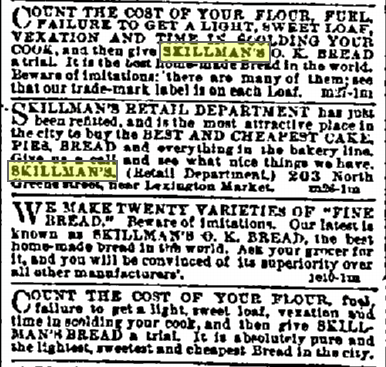George R. “Cracker-baker” Skillman
This is a very long post about a piece of Skillman family history. There’s plenty of general interest history in here as well, but I go very deep in the weeds in some places. If you’ve stumbled onto this post via a web search and think that we may be related, please drop me a line!
When I recently wrote about my family’s connection to the Great Baltimore Fire, it got my curiosity going again about my great-great-great-grandfather, George R. Skillman. Since there are so many men named “George R. Skillman” in our family, we’ve always called him “Cracker-baker George”.

For a long time, that was pretty much all we knew about him: he lived in Baltimore, had some type of association with the Maryland Institute, and made a name for himself in cracker-baking. That was it.
In recent years, I’ve done some digging on Ancestry, and was able to locate some Census records and his Civil War draft registration on there, but my mission at the time was to try to get information on the whole family, not to just drill down on one or two members, so I never got that deep on his life story. That all changed with the anniversary of the Great Baltimore Fire. I wanted to find out more about who this guy was.
I collected all the data that I had from the traditional family story, to the Census records I found online, and went down to the main Enoch Pratt library, hoping that they would have some good sources. I’m happy to report that they were tremendously helpful. I was able to find some information about companies he worked for, and even some clues about a few other relatives in Pratt’s collection of books. Searching the city directories and the online archives of The Baltimore Sun (which the library subscribes to) were instrumental in putting some of the pieces together.
There are still plenty of holes – one of the Pratt librarians told me that this is probably always going to look like Swiss cheese – but here’s the story of his life that I have (so far):
George R. Skillman was born January 1, 1837 in Baltimore. His parents were F. Robert J. Skillman and Naomi Sophia (Miller) Skillman.
He was a member of the Methodist Episcopal Church. His family attended services at High Street Methodist Episcopal (originally built at 230 S. High St. – now a parking lot) and later in life, at Grace Methodist Episcopal in Baltimore.
The first reference to him that I found was in The Sun on March 8, 1858. He apparently attended a meeting in Temperance Hall in Baltimore, where the attendees were discussing their support for “The President’s Plan” regarding Kansas. This is a reference to the Lecompton Plan for Kansas’ state constitution – a constitution that would have allowed slavery in the Sunflower State. From what I’ve been able to find, George was a life-long Democrat, so it isn’t surprising that he’d be supporting President Buchanan as a young man.
On April 22, 1858 he married Mary Elizabeth Pierce. The couple would go on to have 8 children, but three of them wouldn’t survive past their twenties. My particular branch of the family is descended from his 4th son, Robert G. Skillman.
He registered for the draft in 1863, listing his occupation at the time as “Clerk”. The 1864 Woods’ City Directory has him living at 90 N. Eden Street (a house that no longer exists), and shows that he’s working as a “Bookkeeper”, but on January 1, 1864, James Beatty announced in The Sun that he was entering into a copartnership with his clerk, George R. Skillman.
His name is called in the draft June 23, 1864, but he doesn’t end up going to war. By June 28, he’d found a substitute to serve in his place. You could do that back in those days, especially if you were a partner in a prominent manufacturing business.
The same city directory in 1865-1866 shows the first reference to the company that he made his name working for: James Beatty & Co. Steam Cracker, Cake, and Ship Biscuit Bakers. This firm seems to have been one of the largest commercial / industrial baking operations in Baltimore at the time. James’ grandfather was also named James Beatty (what is it with all these people having the same names?), and was the U.S. Government Naval Agent in Baltimore during the War of 1812. The Beatty’s were a prominent (and rich) family in 19th century Baltimore. Civil War nerds like me will also appreciate that “ship biscuit” is the naval term for hardtack, and from records I’ve found, the company was definitely a hardtack supplier for the Union army. The company’s address is listed as “Nos. 92, 94 & 96 Dugan’s Wharf, near Pratt Street” – what is now known as Pier 4 at the Inner Harbor.
In the 1870 Census, George lists his occupation as “Baker”, and on April 4, 1871, he’s granted U.S. Patent 113,356 for his Cracker Machine. Clearly, he was an innovative force in the industry. In an 1873 advertisement for the James Beatty Co., George is still listed as being James’ partner in the business. My feeling is that George became the brains, or the heart of the operation, and that James was providing the capital and the business side.
Sometime before 1878, George moves the family to a nicer house at what is initially listed as “329 Myrtle Ave.”, but later listings all show the property more accurately as being at 1408 Myrtle Ave (the current house at this address was built in 1920).
George joins the Board of Managers for the Maryland Institute in 1878. He would end up serving on the board for the rest of his life. Of course, it was through this association that my family first learned of him. In his first year as a board member, the institute held an exhibition (in those days, the school had a mechanical, vo-tech element to it as well as being an art school) in which the very latest technology was demonstrated. That year, the arc light, and the telephone were the big showpieces. The Baltimore Sun, describing the event 20 years later, had this to say:
On top of the tower of the building was placed one of these lights, with a reflector – a crude forerunner of the now well-known electric searchlight. An incident of this application was that when the light was thrown towards the home of Mr. George R. Skillman, on Myrtle Ave., and Mr. Skillman using the other unique exhibit, the telephone, read by it a newspaper extract to an auditor at the other end of the line.
Alexander Graham Bell had his successful test with the telephone just 2 years before. George was certainly a man who wanted to be on the cutting edge of technology.
His association with the Maryland Institute didn’t stop at serving on the board, though. An advertisement in The Sun on February 23, 1880 announces that “George R. Skillman, esq.” will be giving a lecture that evening about “Saalbec, Athens, and Pompeii”. So he’s a history buff, too.
In 1886, a book called “Half Century’s Progress of the City of Baltimore” was published. It included a one-page profile of James Beatty & Co., that mentioned how James took over the company from his father in 1858 and “some years later” added George R. Skillman as a partner. The article goes on to say that George “retired” from the firm in 1884. This isn’t entirely accurate, it seems. An announcement in The Sun on January 1, 1885 states that the partnership had been dissolved, and that James was bringing his son onboard in George’s place. It goes on to say that George had purchased another piece of property on Greene St., and would be starting his own bakery there.
On December 22, 1885, The Baltimore Sentinel published an article stating that:
Sunday afternoon, a fire destroyed the three upper floors of George R. Skillman’s cracker bakery, in Baltimore. The damage to the building is estimated at $10,000 and to stock and machinery $10-15,000.
Some “retirement”, huh?
The 1886 Woods’ City Directory lists “Skillman, George R.” under the category “Steam Bakers”, with an address at 51-57 N. Greene St. This was the location that was destroyed by the aforementioned fire. Luckily, George was fully-insured, and he rebuilt the business at a location up the street. By 1887, that new listing has appeared as “George R. Skillman Universal Steam Bakery” at 203-211 N. Greene St. (now a parking lot for the nearby University of Maryland campus).
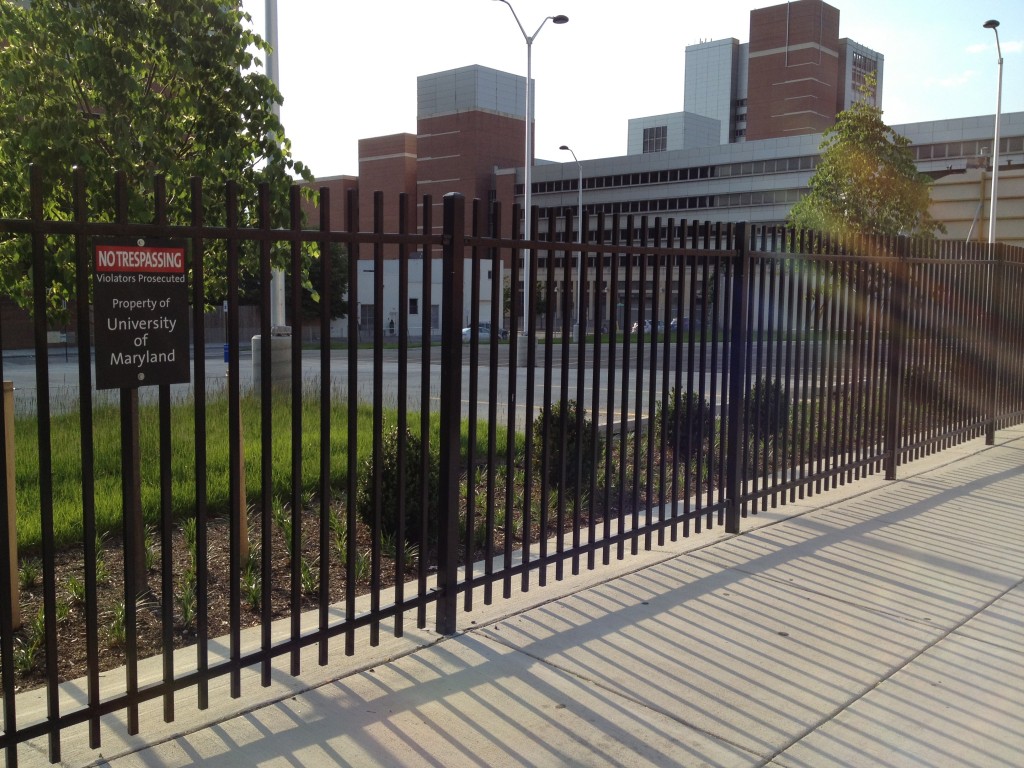
The Sun has several text ads for the company from this period:
That last one is terrific. I have to wonder how much time was wasted by 19th century Baltimoreans in “scolding their cooks” about the low-quality bread they made. There’s also a collection of smaller ads. These are all great:
I think it’s interesting that his early ads are all about bread. In those days, most people baked their own bread at home. Even as late as 1910, only about 30% of bread was store-bought. His marketing push is based around his bread being an affordable luxury. He can make it better than you can yourself, and you might even save time and money. Rather than relying totally on local grocers carrying his bread, he also opens a full-service retail store at the bakery sometime in the 1890s.
On January 1, 1892, an advertisement in The Sun announces that my great-great-grandfather, Robert G. Skillman, has been made a partner in his father’s business. Only 26 years-old at the time, he is the eldest surviving son.
At the same time, George continues improving on the state of the art in his industry. In 1892, he’s granted U.S. Patent 487,431 for a commercial oven he’s invented.
It’s around this time though, that things look like they start going downhill a bit.
On January 27, 1891, The Sun mentions a court case, Edward A.F. Mears v. George R. Skillman. I don’t have any of the details of the case, but I know that George lost, and had to pay a sum of $45 to Mr. Mears.
Another article, entitled “Business Troubles” appears in The Sun on May 7, 1895. Guess what this is about:
George R. Skillman & Co., proprietors of the bakery at 203-211 N. Greene Street and of the restaurant at 225 N. Eutaw Street, made an assignment for the benefit of creditors yesterday to George D. Iverson, trustee. The bond was for $15,000, double the estimated value of the assets, which are said to consist mainly of special machinery. The liabilities, it is said, will aggregate about $30,000….They said the assignment was due to the low price of crackers and cakes, and to depression in the business.
So by 1895, he’s up to his eyeballs in debt, and he can’t seem to find a way out. This sounds like really bad news, except that another announcement appears in The Sun on June 21, 1895 – less than 2 months later:
George D. Iverson, Trustee of George R. Skillman & Co., bakers, under deed of trust for the benefit of creditors, yesterday reconveyed the trust property to the firm, who have settled with all their creditors. George R. & Robert G. Skillman are the members of the firm.
So it looks like George has found a way to pay-off all the people he owed money to. He must have come into some quick cash….
Fast forward to December 4, 1895 when The Sun ran an ad announcing that the Skillman Universal Steam Bakery had been purchased by the New York Biscuit Co. The ad expressed the hope that their customers would continue to support the business. George R. Skillman is listed at the bottom as the “Manager”.
In 1898, the New York Biscuit Co. (now owners of the Skillman Bakery) merged with the American Biscuit and Manufacturing Co., creating the National Biscuit Co. in the process. This conglomerate would later shorten its name to Nabisco. By 1900, they’ve consolidated their operations in Baltimore to the 203-211 N Greene St. location, and George R. Skillman is still the Manager.
But there’s still more trouble brewing.
The Sun publishes an article on July 25, 1899 entitled “To Fight the Trusts – Wholesale Grocers Declare War on Big Corporations”. In the article, its reported that the local grocers don’t want to deal with the larger suppliers, and several have agreed to only buy from smaller, local providers. One of the companies that is specifically targeted in this protest is the National Biscuit Co. that George sold-out to, and is now managing the Baltimore operations of. But there’s about to be another plot twist.
The Polk’s City Directory for 1901 lists the following under “Bakery, Wholesale”:
- Skillman Bakery (National Biscuit Co.), 203-211 N. Greene St., Elmore B. Jeffery, Manager.
- Skillman, George R. (Union Biscuit Co.), 115 S. Frederick St.
By 1903, the listings look like this:
Under “Bakery, Wholesale”:
- National Biscuit Co., 203-211 N. Greene St.
Under “Bakery”:
- Skillman Bread & Pie Co., 1516-1524 N. Regester St., George R. Skillman, Proprietor.
So when the big, national baking interests had become the bad guy, George removed himself from that situation and started up another operation of his own. And look at how he’s marketing the new venture: “biscuits” and “crackers” in 1903 are products that are made almost exclusively in large commercial bakeries. “Bread” and “pie” are still primarily products that are made at home by most people. He’s trying to make this new business at least appear to not be a big, scary company.
Other than the damage to the Maryland Institute that I talked about in an earlier post, I don’t think George is personally affected by the Great Fire in 1904. All his properties are outside of the disaster area. He suffers a very personal disaster a few weeks later, though. On February 20 his wife Mary dies.
1905 is the last year that George is listed in the city directories as being the “proprietor” of the Skillman Bread & Pie Co., so it looks like his day-to-day involvement has slowed. Elmore B. Jeffery (who replaced George at National Biscuit Co.) is brought onboard as the Manager of Skillman Bread & Pie in 1906. How about that, huh? George has also left the family home on Myrtle St., and moved to 3617 Forest Park Ave (the current house on this site was built in 1920). I have to imagine that his wife’s death had something to do with both moves.
In 1909, George sued the Skillman Manufacturing Co., claiming that they owed him $115 and that the company was insolvent. He won himself the company receivership in the case, and the managers of the firm were forced to admit that George’s claims were true. At this point, the company address is listed as being 110 S. Charles St. The old Regester St. location was sold in 1910 for $14,000 to a man who built an auto repair shop there.
Skillman Bread & Pie Co. moves again to 104-112 W. Barre St. at least by 1912, and by 1914, it has completely disappeared from the city directories. It seems like the business had run its course.
George is back in The Sun in 1912, though. An article on November 19 states that he had sold the property at 203-211 N. Greene St. (somehow, he must have re-bought the place) to the Lexington Storage and Warehouse Co., and the next year’s city directory lists him as the President of that company.
The gig doesn’t last long, it seems. While he remains involved with the Board of Managers for the Maryland Institute, and as a Board Member for The Boys’ Home on Calvert and Pleasant St., by 1915, he no longer has an occupation listed in the directories. Sometime before 1917, he’s moved in with his daughter and son-in-law, George MacCubbin, at 3803 Clifton Ave (the current house at this address was built in 1910, so this seems to be the only house he lived in that still exists).
He died in that house, October 18, 1918 at the age of 81, having led a very full life.
He is buried at Mt. Olivet Cemetery in Baltimore.
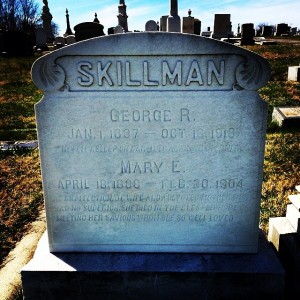
The best indication of what he did is found in the 1917 edition of “A Compilation of the Messages and Papers of the Presidents”. This collection of Presidential remarks also includes an “encyclopedic index”, there to give background information on a number of topics that may come up in speeches and letters of the Presidents. The entry in the index for “Baking Industry” explains that it has become at least the 12th largest industry in the country, and that the growth has been incredible in recent years. It specifically states:
Some of the other bakers engaged in interstate trade in the early history of the industry and who contributed to its national importance were…Skillman, of Baltimore….
Husband, father, baker, inventor, technologist, historian, businessman, civic leader, and “contributor of national importance”. George R. Skillman, my great-great-great-grandfather, was all of these things.
UPDATE – 12/27/2014:
I was able to find a display tin from the Skillman Universal Steam Bakery in an antique shop on Maryland’s Eastern Shore. My brother and I bought it to give to my father this Christmas so that it can stay in the family.
